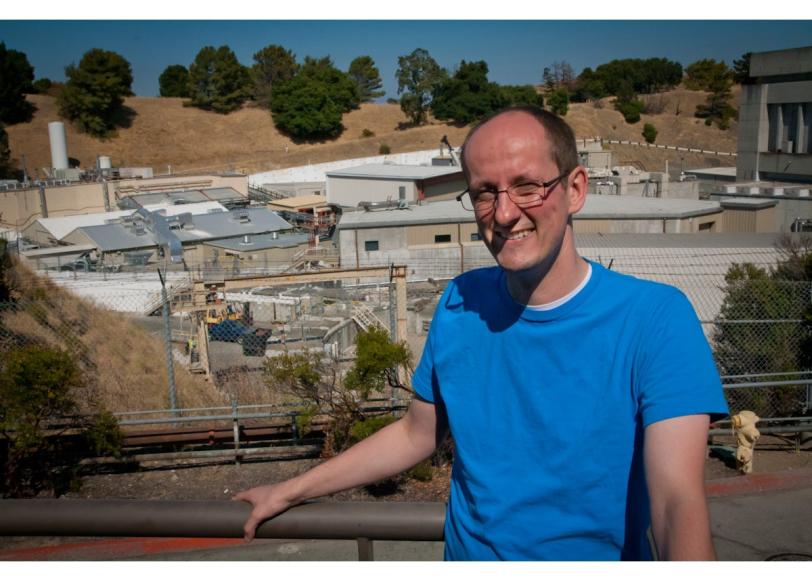Stefan Mannsfeld Wins Spicer Award
Stefan Mannsfeld, staff scientist at SLAC, has been announced as the winner of the 2011 William E. and Diane M. Spicer Young Investigator Award.
By Mike Ross
Stefan Mannsfeld, staff scientist at SLAC, has been announced as the winner of the 2011 William E. and Diane M. Spicer Young Investigator Award.
The award honors a young researcher whose work has benefitted from – or is beneficial to – either the Stanford Synchrotron Radiation Lightsource or the worldwide synchrotron community. It is open to senior graduate students and those who are seven or fewer years into their professional scientific careers.
“I am very surprised and deeply honored to receive this award,” Mannsfeld said. “I had such a big smile on my face when I came home that my wife knew right away that something good had happened.”
Mannsfeld has worked at Stanford and SLAC since receiving his Ph.D. in physics in 2005 from Germany’s Technical University in Dresden. Initially a postdoctoral fellow in Stanford’s Chemical Engineering Department with Zhenan Bao, Mannsfeld quickly impressed his professor and colleagues with his physics insights and creative experimental skills that have led to a series of important insights into the properties of thin-film organic electronic materials.
“He came up with many innovative ideas that took my group to several new directions,” said Zhenan Bao, associate professor of chemical engineering at Stanford. “He is the kind of person who will come up with good ideas regardless of the subject he works on and carry those projects from concept to completion. Dr. Mannsfeld is the most creative and solid young scientist I have encountered in the past 10 years.”
“Although it was not his field of expertise, Stefan quickly developed a good knowledge of thin-film diffraction from both practical and theoretical perspectives,” said Mike Toney, SSRL Head of Materials Sciences, who has worked with Mannsfeld for the past five years. “Most significantly, he developed theoretical tools and software to determine diffraction intensities and then developed and implemented modeling software that precisely determines molecular packing in both 2-D monolayers and 3-D thin films. This is a huge accomplishment that has been and will be used by many SSRL users.”
Mannsfeld conducted Grazing Incidence X-ray Diffraction studies at SSRL that revealed why pentacene molecules are – unlike nearly all other organic conductors – more conductive in thin films than in a regular, three-dimensional crystal. He found that the pentacene’s five hydrocarbon stand vertically on the substrate in the single-layer, more conducting form, but are more tilted and less-conductive in crystals of the material that are placed on the substrate. This marked the first time that the precise molecular packing of an organic semiconductor molecule was determined in a single layer-thin film.
Last year Mannsfeld built and tested very high sensitivity flexible pressure sensors with microstructured rubber dielectric layers that could be used in electronic skin.
"Our skin has several different types of cells that can sense a great range of pressure, which allows us to control our grip, for example, to hold a fragile glass or a heavy weight," Mannsfeld said. "Our sensor layers are a first step toward enabling such control artificially. They can distinguish pressures over five orders of magnitude – from a mere fly landing on your arm to the grip you'd need to hold a 20-pound dumbbell."
The annual young investigator award is named for William Spicer (1929-2004), co-founder of SSRL and a pioneer in photoemission spectroscopy, and his wife, Diane, who passed away in 2009.
Mannsfeld will give a presentation on his research and receive the award on October 24 at the annual SSRL/Linac Coherent Light Source Users' Meeting.
